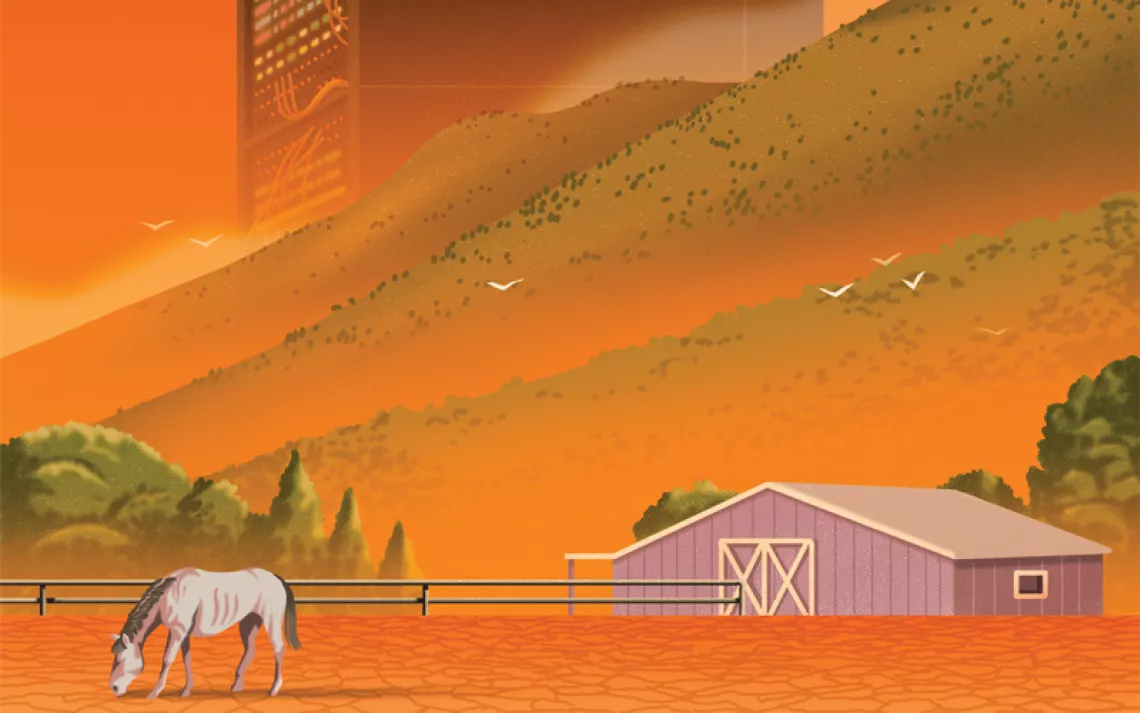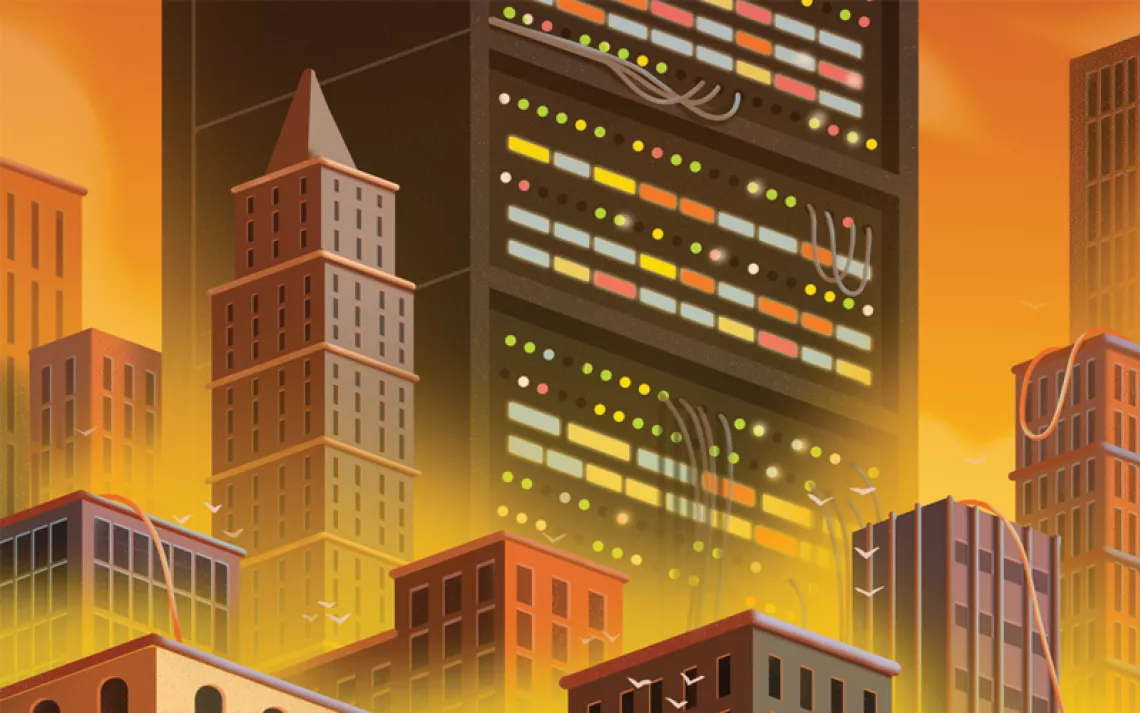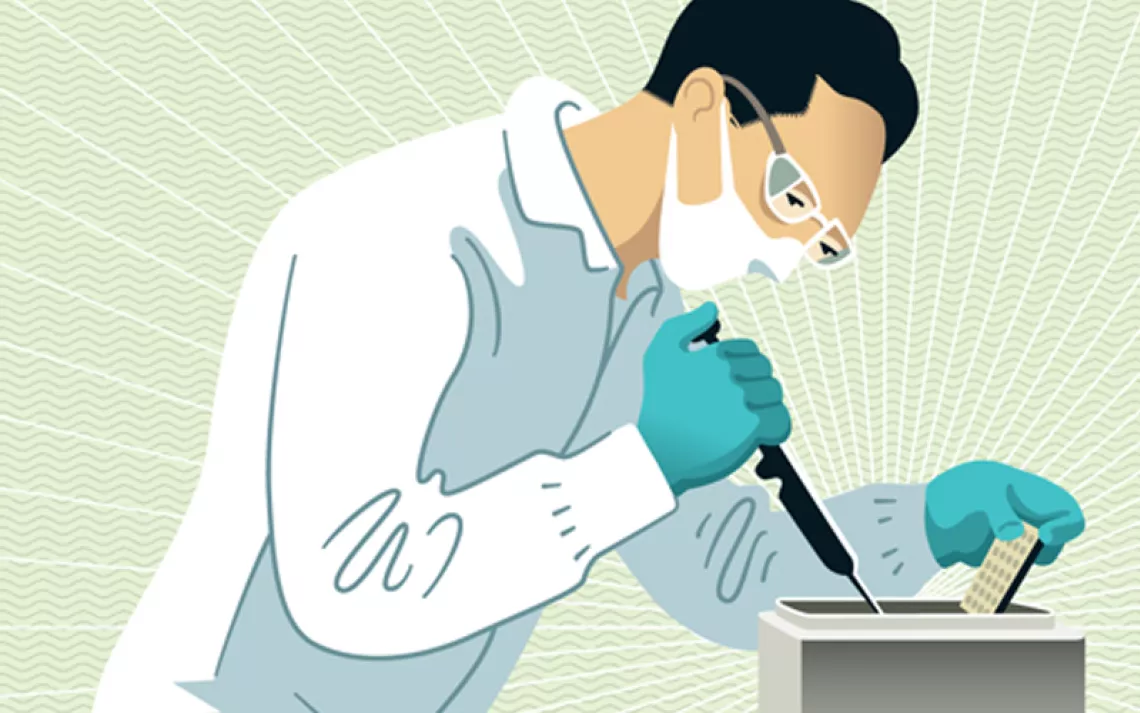Meet the Land Salmon
Terrestrial fish farms are betting that improved technology will make them competitive
Salmon, with their carnivorous diet and typically anadromous lifestyle, are ludicrously difficult to farm. But there's a need for it: In 2013, salmon overtook canned tuna to become the most-eaten fish in the United States.
Over 70 percent of salmon consumed globally are raised in ocean pens, which can spread viruses, parasites, and antibiotics to wildlife. As evidence of this danger has grown, so has the movement to shut down ocean salmon farming.
Some entrepreneurs are moving the whole farm onto land. It's more expensive. Several attempts have already gone under. But terrestrial fish farms are betting that improved technology—and stronger regulation of coastal waters—will make them competitive. Salmon land farms are already operating in Florida, Canada, Iceland, and the United Arab Emirates, and others are in the works in California and Maine.

Atlantic salmon are the preferred species for farming. Eggs are incubated for six to eight weeks, until they turn into alevin (newly hatched fish) and grow into fry.

In the fry tank, the fish are fed for the first time. In the wild, they'd eat insects, larvae, and plankton. In farms, they usually eat food made from fishery scraps, corn, and soy. The waste produced by the fish can be sold as fertilizer, though it's cheaper to throw it away.

Over the next seven months, the fry grow and transform into parr and then smolts, which thrive in saltwater. Farms can accelerate the process by covering the tank and alternating between 12 hours of light and 12 hours of darkness for six weeks.

The salmon spend around 17 months living in saltwater. Chilling, oxygenating, and filtering the water uses a lot of electricity, so renewable energy is critical to sustainability.

Another advantage to farming salmon on land: The farms can be located closer to where salmon eaters live, cutting down on transportation expenses and emissions.
 The Magazine of The Sierra Club
The Magazine of The Sierra Club



